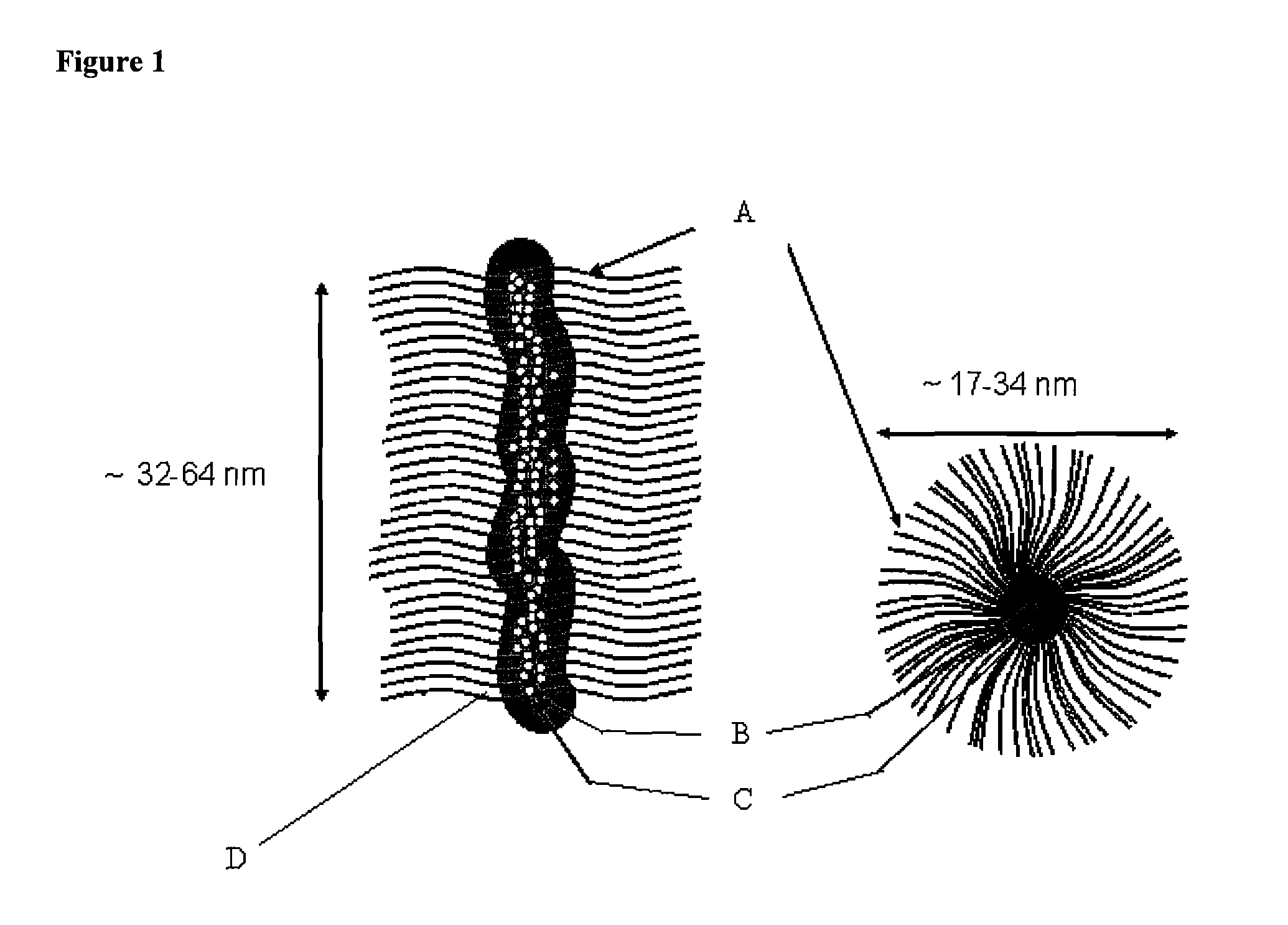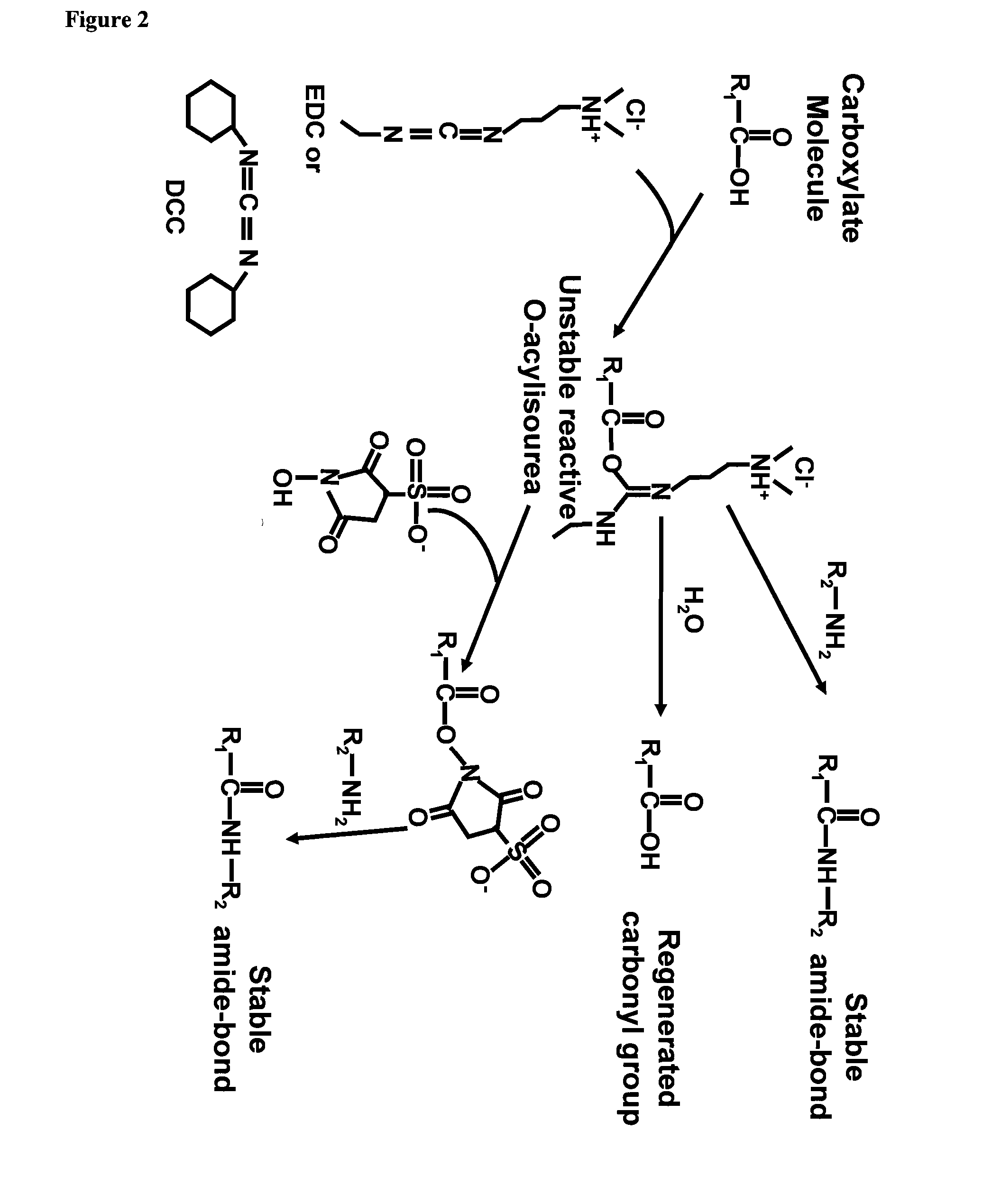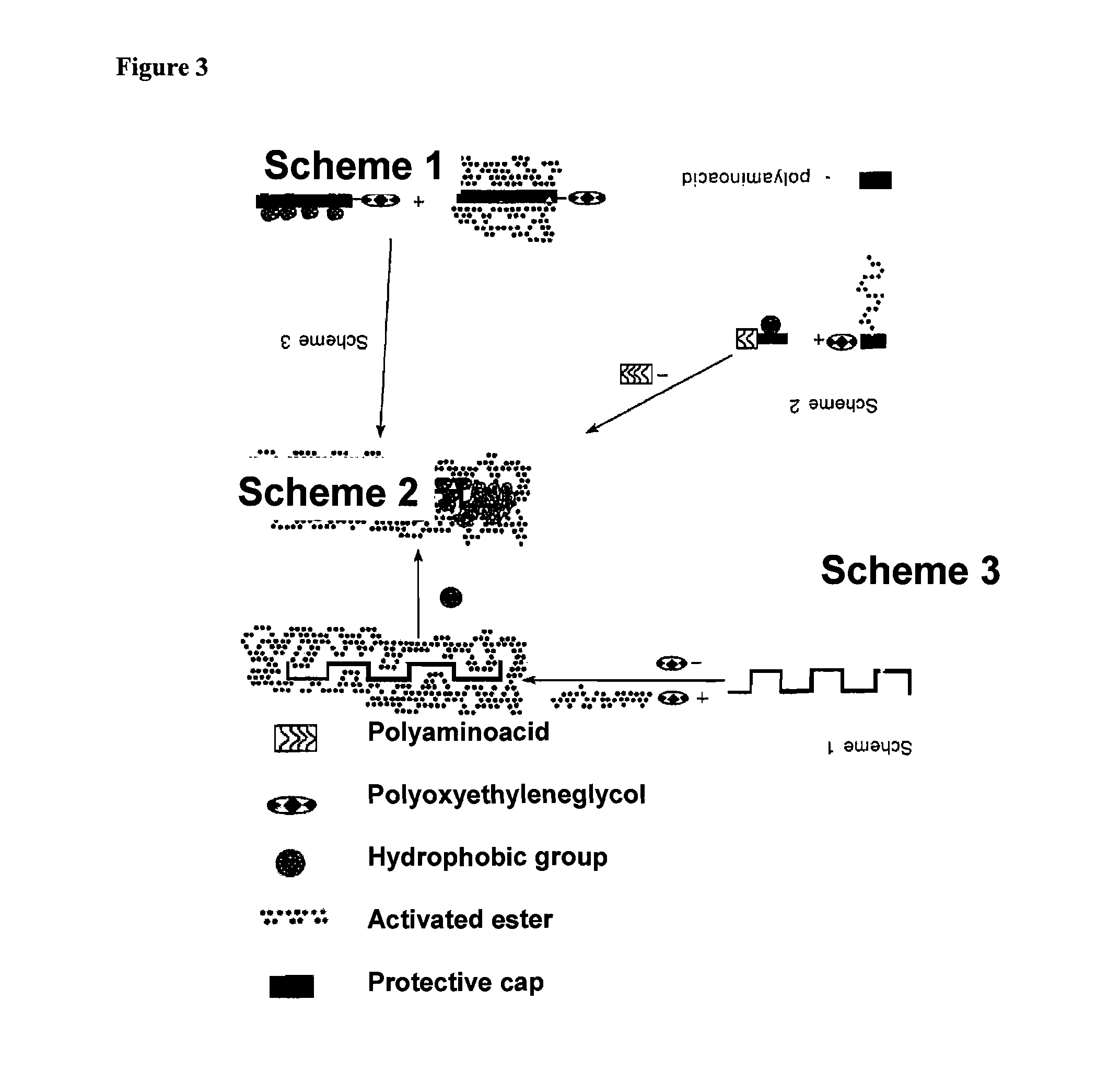Hydrophobic core carrier compositions for delivery of therapeutic agents, methods of making and using the same
a carrier composition and hydrophobic technology, applied in the direction of antimycotics, depsipeptides, peptide/protein ingredients, etc., can solve the problems of inability to meet the needs of outpatients requiring high levels of mobility, short biological half-lives of peptides and proteins with low molecular mass, and associated disadvantages of quality of life and potential intravenous administration, so as to achieve the effect of being easily adjusted
- Summary
- Abstract
- Description
- Claims
- Application Information
AI Technical Summary
Benefits of technology
Problems solved by technology
Method used
Image
Examples
example 1
Preparation of N-Hydoxysuccinamide Esters of Fatty Acids and Aromatic-Alkyl Carboxylic Acids
[0404] The N-hydoxysuccinamide esters of fatty and aromatic-alkyl carboxylic acids will facilitate the synthesis of hydrophobic-core carriers of the present invention since these esters react readily with amino groups along the carrier. The following method was taken from Lapidot et al. [Lapidot, Y., Rappoport, S. and Wolman, Y. (1967) J. Lipid Res., 8, 142]: (i) prepare a 230 mM solution of N-hydroxysuccinimide by dissolving 3.45 g (30 nmol) in 30 ml of ethyl acetate dried over molecular sieve pellets in a stoppered 250-ml glass conical flask; (ii) to the above solution add 30 nmol of desired fatty acid; (iii) prepare a solution containing 30 mmol (6.18 g of dicyclohexyl carbodiimide in 10 ml ethyl acetate, and add it to the solution of fatty acid; (iv) allow the reaction to proceed overnight at room temperature; (v) remove the precipitated dicyclohexyl urea by filtration using a suction t...
example 2
[0406] Synthesis of MPEG-poly-L-lysine (5000; 40.000; 73%) (PLPEG-I) The reagents, MPEG-succinimdyl-succinate and polylysine, are commercially available and their syntheses are well known in the art. Poly-L-lysine (200 mg; Polylysine Hydrobromide; Sigma chemical Co.; DPvis: 264; MWvis: 55,200; DPmalls: 190; MWmalls: 39,800; 0.7 mmoles aminogroup by TNBS assay Sparado et al. Anal Biochem 96:317, 1979) was dissolved in 10 ml of 0.1 M carbonate buffer pH 8.35 and 1150 mg of MPEG-succinimdyl-succinate was added, vortexed, and incubated overnight at room temperature. The next day, aliquots were taken and the amount of amino groups remaining was quantified using trinitrobenzenesulfonic acid (Sparado et al. Anal Biochem 96:317, 1979). The result indicated that 73% of amino group had been conjugated to MPEG. To cap the carboxyl terminal of polylysine that can potentially interfere with the next reaction (addition of hydrophobic group), 600 ul of ethylenediamine and 100 mg EDC was added mixe...
example 3
[0407] Synthesis of MPEG-poly-L-lysine (5000;40,000;55%)(PLPEG-II) The reagents, MPEG-succinimdyl-succinate and polylysine, are commercially available and their syntheses are well known in the art. Poly-L-lysine (200 mg; Polylysine Hydrobromide; Sigma chemical Co.; DPvis: 264; MWvis: 55,200; DPmalls: 190; MWmalls: 39,800; 0.7 mmoles aminogroup by TNBS assay Sparado et al. Anal Biochem 96:317, 1979) was dissolved in 10 ml of 0.1 M carbonate buffer pH 8.35 and 900 mg of MPEG-succinimdyl-succinate was added, vortexed, and incubated overnight at room temperature. The next day, aliquots were taken and the amount of amino groups remaining was quantified using trinitrobenzenesulfonic acid (Sparado et al. Anal Biochem 96:317, 1979). The result indicated that 55% of the amino groups had been conjugated to MPEG. To cap the carboxyl terminal of polylysine that can potentially interfere with the next reaction (addition of hydrophobic group), 600 ul of ethylenediamine and 100 mg EDC was added mi...
PUM
| Property | Measurement | Unit |
|---|---|---|
| molecular weight | aaaaa | aaaaa |
| molecular weight | aaaaa | aaaaa |
| molecular weight | aaaaa | aaaaa |
Abstract
Description
Claims
Application Information
 Login to view more
Login to view more - R&D Engineer
- R&D Manager
- IP Professional
- Industry Leading Data Capabilities
- Powerful AI technology
- Patent DNA Extraction
Browse by: Latest US Patents, China's latest patents, Technical Efficacy Thesaurus, Application Domain, Technology Topic.
© 2024 PatSnap. All rights reserved.Legal|Privacy policy|Modern Slavery Act Transparency Statement|Sitemap



